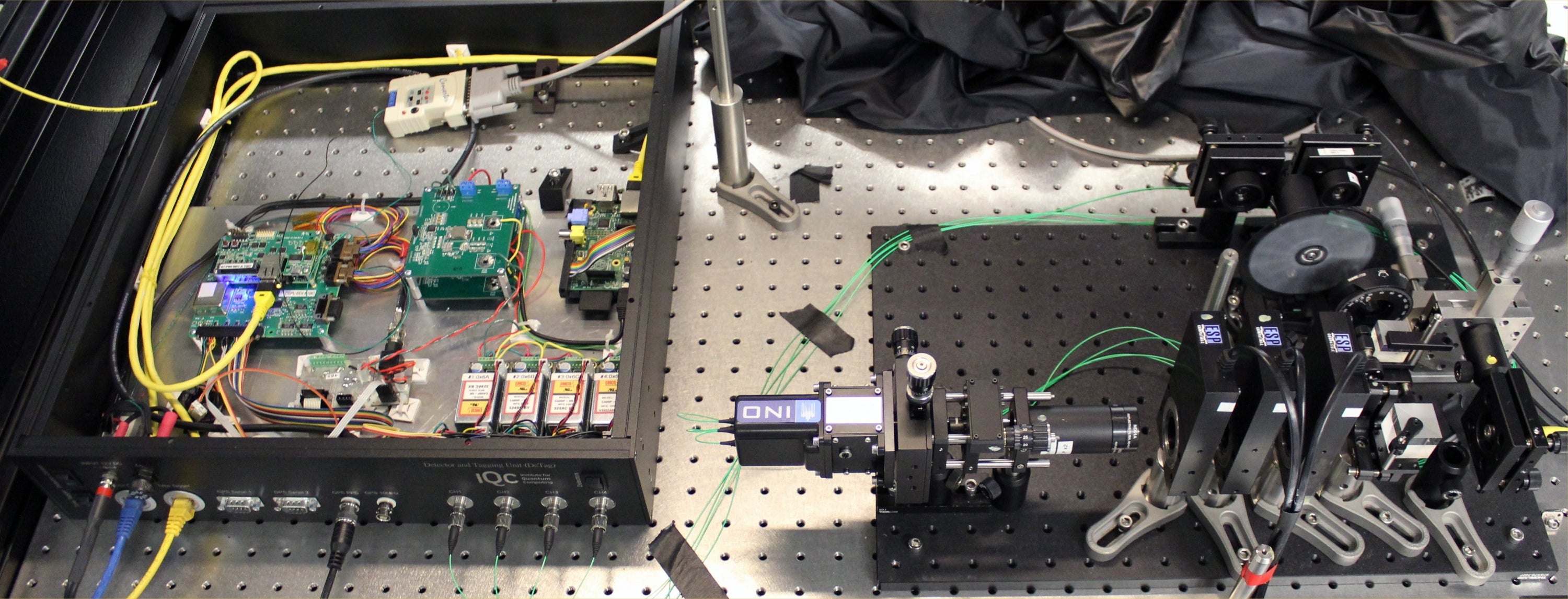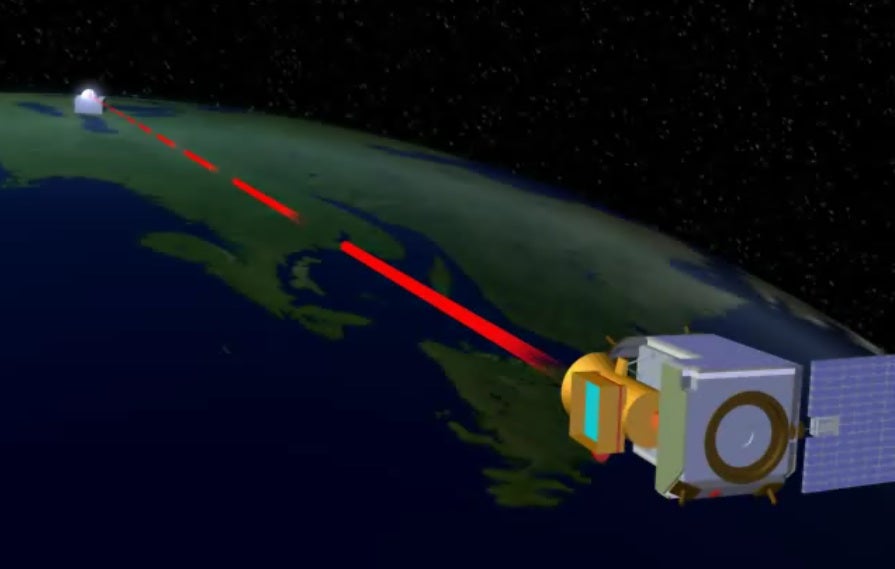Senior representatives from the CSA and industrial partners witnessed a successful laboratory demonstration.
On January 29, 2015, a team led by Professor Thomas Jennewein at the University of Waterloo’s Institute for Quantum Computing (IQC) completed a successful laboratory demonstration of a form, fit and function prototype of a Quantum Key Distribution Receiver (QKDR) suitable for airborne experiments and ultimately Earth orbiting satellite missions. The team designed and built the QKDR under a $600,000 contract from the Canadian Space Agency (CSA).
“The successful demonstration represents a significant milestone in advancing a quantum satellite mission,” said Jennewein, a professor in the Department of Physics and Astronomy in the Faculty of Science. “By successfully validating the prototype QKDR in a lab environment, we’ve advanced the technologies to Technology Readiness Level Four (TRL4).” Jennewein’s group led a large and geographically dispersed project team that included industrial partners from Ontario, Québec and Europe.

The prototype QKDR needed to accommodate the payload constraints of a microsatellite-class mission. That included using only 10 W of power and weighing less than 12 kg. Through radiation testing at TRIUMF located at the University of British Columbia, it was shown that with adequate shielding and cooling the QKDR detector devices can survive and operate in the space radiation environment for at least one year and possibly up to 10 years. The team also defined a credible path-to-flight for all key technologies including the miniaturized integrated optics, detectors and data processing electronics for the satellite payload.

Commercially available ground-based technologies, however, can only cover distances of up to 200 km due to photon absorption in fibre optic cables. Free-space, satellite-based QKD systems offer the best approach for surpassing this distance limitation with today’s technology.
For over a decade, Jennewein has been strategically involved in shaping and advancing long-distance quantum communication experiments by bringing quantum communication experiments into space. This work was initially started by the European Space Agency (ESA) in 2001 and evolved into a program called Space-QUEST, which included a proposal for performing several experiments on the foundations and applications of quantum physics in space with space-based quantum hardware. In 2008, Jennewein participated in an experiment in which reflected weak laser pulses were sent from the ground to a low Earth orbit satellite and the transmission results were used to estimate a key rate for QKD transmission from the satellite to the ground.